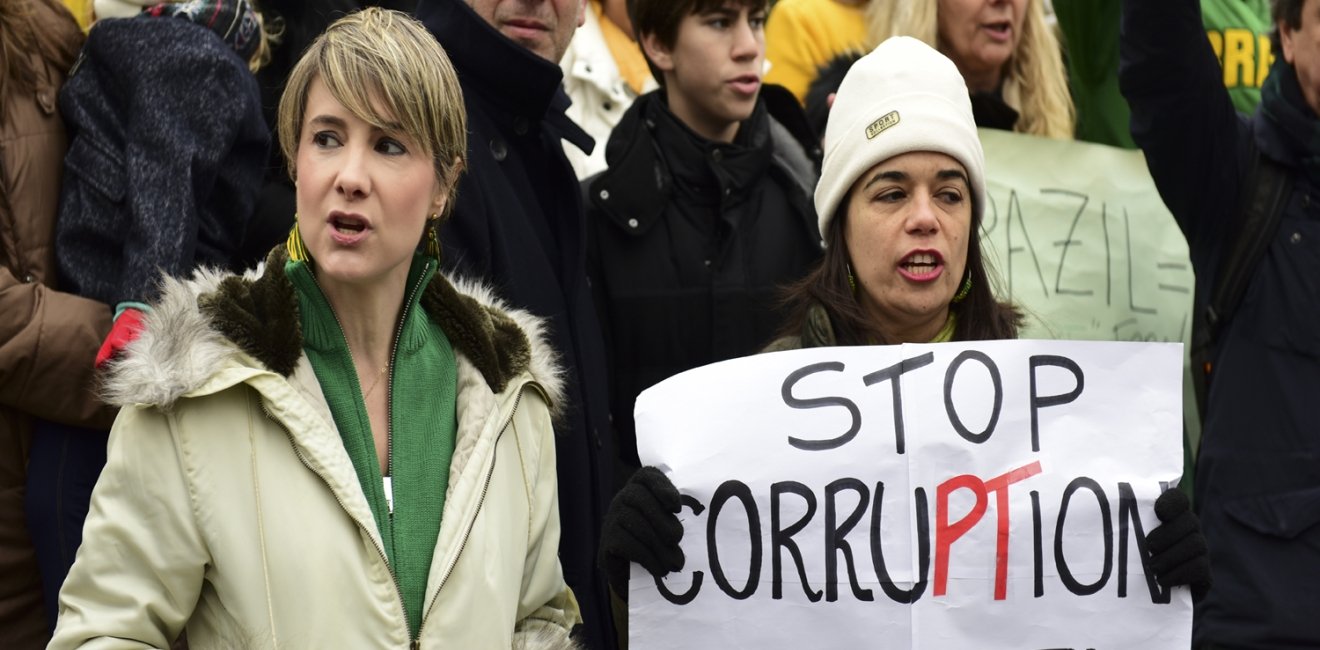Women and Corruption: Perceptions Aside
Women are especially subject to the impact of corruption, and women’s exercise of public sector leadership promotes certain kinds of anticorruption efforts.
Women are especially subject to the impact of corruption, and women’s exercise of public sector leadership promotes certain kinds of anticorruption efforts.

The relationship between corruption and women is often considered through the simple question of whether women are less corrupt than men. Yet this question is a contentious one — and perhaps the wrong one. Certain issues are clear: Women are hurt more by corruption than men. Women leaders are generally perceived to be less corrupt than men. And women in policymaking positions have sometimes helped reduce corruption, so their holding leadership and policymaking positions is undeniably important.
Corruption’s Disproportionate Effect on Women
Just as women suffer the impact of war more profoundly, so too do women experience the effects of corruption disproportionately. “Women form the majority of the global poor”: according to the International Labor Organization, women make up 70 percent of the world’s poor and 65 percent of the world’s illiterate. When they are poor, women depend on public services (like education and health care) whose availability is reduced by corruption, which diverts money and other resources to just a few hands.
In addition, bribery is sometimes a prerequisite for receiving public services or joining the formal economy, and bribery may be considered a “cost of doing business” in the private sector. Women with little money, unable to pay the bribe or negotiate its price down, suffer from this sort of corruption more often than men.
Moreover, women are less able to hold officials accountable because women, more than men, lack economic literacy and political agency. Women may also know less about their legal rights than men, which limits their ability to fight back against corruption. Across the world, poor women are often denied justice and excluded from the rule of law as a result of gender inequality. All of this renders the poor, especially women, more vulnerable than others to the effects of corruption.
Women Leaders’ Anticorrupt Images
The public typically sees women in leadership positions as less corrupt and less corruptible than men, according to a Rice University study entitled “‘Fairer Sex’ or Purity Myth? Corruption, Gender, and Institutional Context.” The divergence in reputation may depend on the type of political system. One study, for instance, found that women were not perceived as less corrupt in presidential systems, but that “considerably lower levels of perceived corruption” by women were correlated with higher rates of women’s representation in parliamentary systems. Another report, in the Journal of Development Economics, associates a higher proportion of women in a country’s labor force with lower levels of perceived corruption. Others have argued that because women leaders are held to higher standards than their male counterparts, they face higher risks if they participate in corrupt activities and thus may be deterred from doing so.
Women in leadership and decision-making positions have a distinct ability to lower levels of corruption and alleviate the disproportionate impact of corruption on women.
In asking whether women are less corrupt than men due to gender or other factors, various reports and studies have arrived at different conclusions. Factors other than gender could be more consequential, according to a number of experts in academia. The authors of the Rice University study, for example, argue that issues of cultural context, political systems, and accountability, for example, could better explain why women may be (or appear to be) less corrupt than men. A 2010 United Nations Development Program and United Nations Development Fund for Women report, by contrast, notes the “gendered opportunity structure of corruption” — meaning that women have fewer chances to engage in corruption because the necessary patronage and political relationships traditionally have been held by well-entrenched men — may explain lower levels of corruption among women.
Further, the proportion of women leaders in public service remains low: the global average is around 19 percent. This gender imbalance means that there are fewer women leaders, who understand the impacts of corruption on women and bring in diverse viewpoints and skills, in positions to create sustainable policies to curb corruption.
Women Leaders’ Ability to Act against Corruption
Women in leadership and decision-making positions have a distinct ability to lower levels of corruption and alleviate the disproportionate impact of corruption on women. Women may be able to “reduce corruption via policies,” suggest several experts, including those at the research organization International Growth Centre. Women policymakers may, for example, focus more on legislation dedicated to education and health, with positive implications for human capital and, in turn, negative implications for corruption, as was shown in studies conducted by the Rutgers Center for American Woman and Politics. As former US ambassador for global women’s issues Melanne Verveer said, “It’s not about having more women in politics and saying, ‘Ah, that will change everything.…’ It’s about changing the gender imbalance and then we could do a better job of tackling our problems.”
All voices, including women’s, should be represented at the policymaking and negotiating tables. A recent study of 181 peace agreements signed between 1989 and 2011 found that when women participated as witnesses, signatories, mediators, or negotiators, the likelihood of the agreement’s lasting at least two years increased by 20 percent. Similarly, women leaders should be able to negotiate and implement policies that help reduce corruption. Given women’s distinctive ability to understand the impacts of corruption — because they disproportionately experience it — having women at the policymaking table is vital to establishing more sustainable anticorruption policies.
This ability to impact corruption does vary from country to country. Yet at the same time, “strong electoral accountability appears to be the mechanism by which higher levels of women’s representation relates to reduced corruption perception.” Including women leaders across sectors and across countries is essential to creating more accountable, just, and equitable societies.
The opinions expressed here are solely those of the authors.
Gwen Young is the director of the Global Women’s Leadership Initiative and the Women in Public Service Project at the Wilson Center. She is a specialist in humanitarian law, human rights, and advocacy, and has published in the field of international human rights and international criminal law. Kendra Heideman is the program associate for the Middle East Program at the Wilson Center. Her interests are related to gender issues in the Middle East and North Africa region, particularly women’s political participation and empowerment.



The Global Women’s Leadership Initiative has hosted the Women in Public Service Project at the Wilson Center since June, 2012. The Women in Public Service Project will accelerate global progress towards women’s equal participation in policy and political leadership to create more dynamic and inclusive institutions that leverage the full potential of the world’s population to change the way global solutions are forged. Read more



